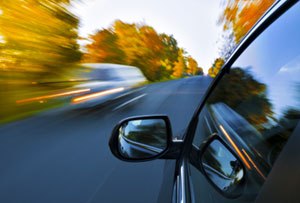Let’s look at what a driver must deal with during the course of the average drive:

- Driving with hands
- Accelerating with the right leg and foot
- Possibly braking with the left leg and foot
- Possibly clutching with the left leg and foot
- Eyes checking dashboard gauges
- Eyes checking right view mirror
- Eyes checking left view mirror
- Eyes checking rear view, center mirror
- Eyes scanning the roadway, to the right, to the front, and to the left
- Listening for warning horns
- Listening for emergency sirens
- Trying to anticipate the actions of other drivers to the front
- Trying to anticipate the actions of other drivers to the rear
- Trying to anticipate the actions of other drivers to the left
- Trying to anticipate the actions of other drivers to the right
These tasks must be placed in the appropriate context because many driving tasks become automated for general processes. Your brain has “been there and done that”, so it requires somewhat less focus. The real problem occurs when the brain is required to engage and encode something unexpected, such as a driver pulling into your lane or a pedestrian walking into the roadway.
Let’s add to this list a driver’s processing and action while talking on a cell phone:
- Obtain the cell phone with one hand
- Divert vision from the roadway and dashboard to the cell phone
- Process the information necessary to retrieve a telephone number
- Process the information necessary to place the call on a cell phone
- Listen for the ring
- Process the information for the identity of the person you are calling
- Process the information for the goal of your call
- Engage the caller by speaking
- Listen to the caller
- Process the information received by the caller
- Process the information necessary to respond to the caller
- Divert vision from the roadway to hang up the cell phone
- Replace the cell phone on the seat
If we assign time to each of these tasks and the required cognitive thought combined with toggling from one task to another may result in as much as a 2 or 3 second processing delay. That distraction delay could result in an additional stopping distance of 100 to 150 feet and at 40 mph, instead of stopping in 8 or 10 car lengths, it could be extended to 16 to 20 car lengths.
Share This


